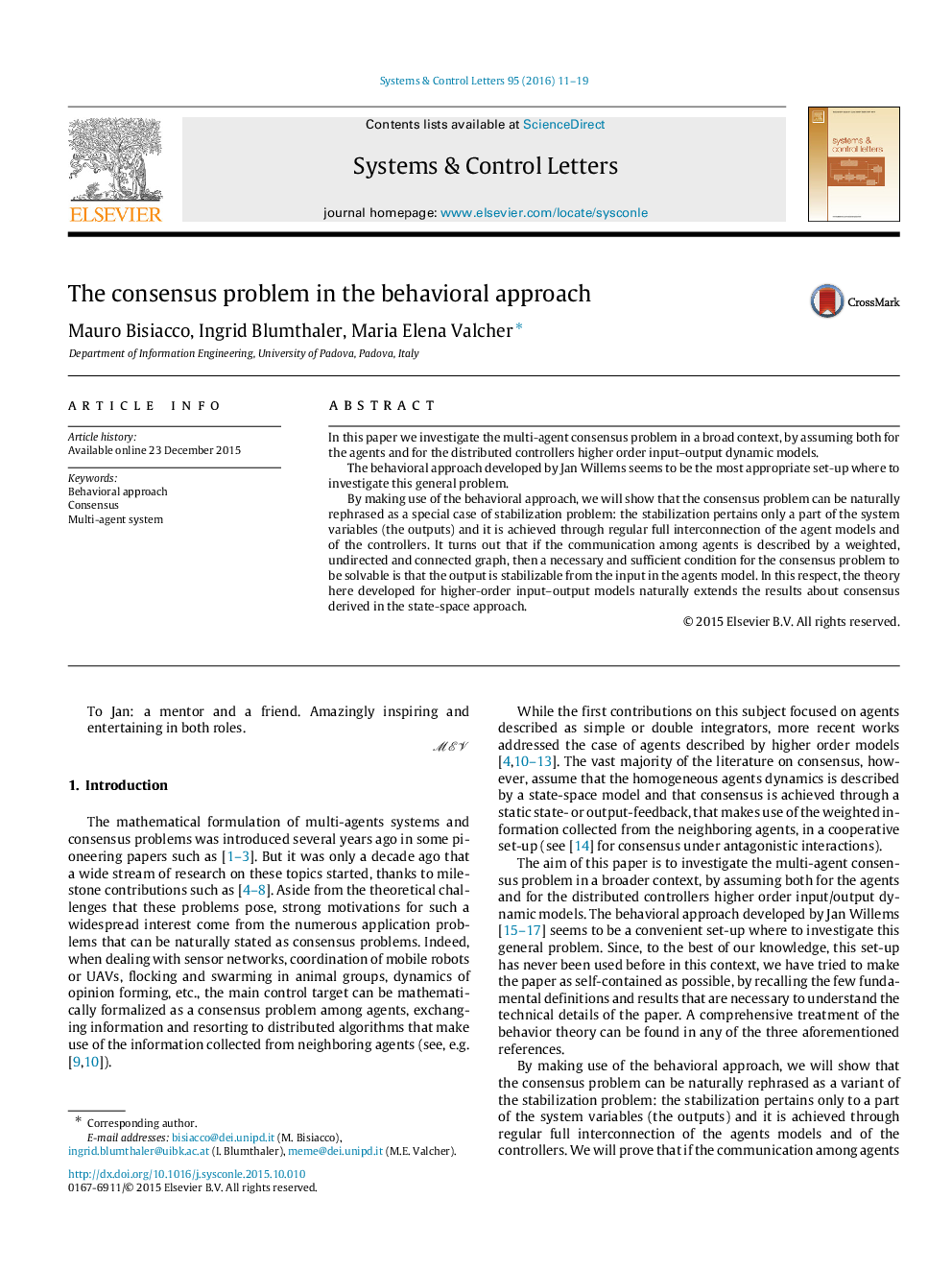| Article ID | Journal | Published Year | Pages | File Type |
|---|---|---|---|---|
| 751811 | Systems & Control Letters | 2016 | 9 Pages |
In this paper we investigate the multi-agent consensus problem in a broad context, by assuming both for the agents and for the distributed controllers higher order input–output dynamic models.The behavioral approach developed by Jan Willems seems to be the most appropriate set-up where to investigate this general problem.By making use of the behavioral approach, we will show that the consensus problem can be naturally rephrased as a special case of stabilization problem: the stabilization pertains only a part of the system variables (the outputs) and it is achieved through regular full interconnection of the agent models and of the controllers. It turns out that if the communication among agents is described by a weighted, undirected and connected graph, then a necessary and sufficient condition for the consensus problem to be solvable is that the output is stabilizable from the input in the agents model. In this respect, the theory here developed for higher-order input–output models naturally extends the results about consensus derived in the state-space approach.
